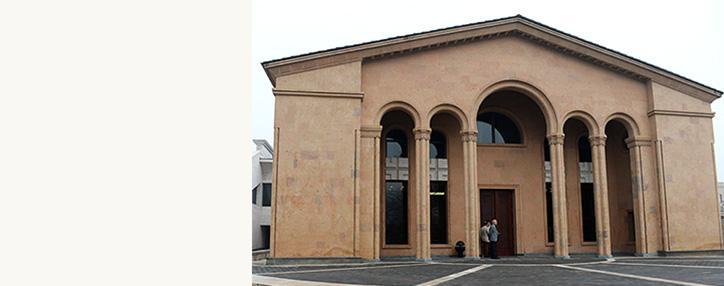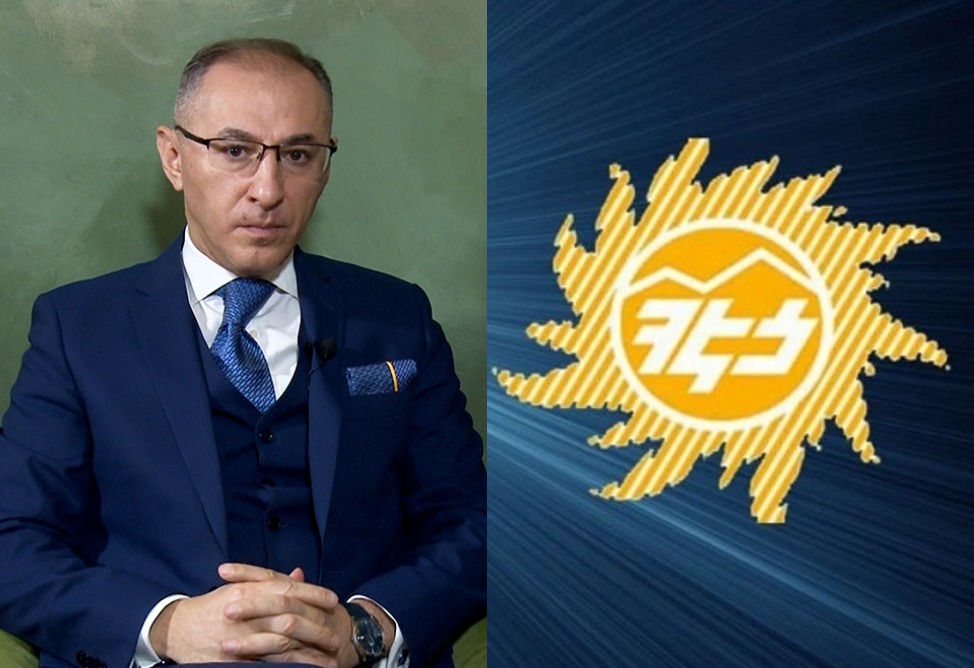Komitas museum-institute opens in Yerevan
29.01.2015,
17:51
Armenia's President Serzh Sargsyan, who is the chairman of the State Commission on coordination of the events for the commemoration of the 100th anniversary of the Armenian Genocide, attended the opening of the Komitas Museum-Institute in Komitas Park in Yerevan.

YEREVAN, January 29. /ARKA/. Armenia's President Serzh Sargsyan, who is the chairman of the State Commission on coordination of the events for the commemoration of the 100th anniversary of the Armenian Genocide, attended the opening of the Komitas Museum-Institute in Komitas Park in Yerevan.
Under the President’s proposal, the resolution to build the museum was passed by the Board of Trustees of Hayastan All Armenian Fund on May 30, 2013. Prior to the opening of the museum, Serzh Sargsyan, in company with the state commission members and guests visited the Komitas Pantheon and placed flowers at his tomb.
The Armenian President congratulated everybody on the opening of the museum-institute, extended his thanks to all the persons who have contributed to the implementation of this important initiative and after touring the museum and familiarizing with various displays, wrote in the book of honorary guests:
“The Komitas Museum-Institute is the symbol of the unity and revival of the Armenian people. Komitas Vardapet joined together what is spiritual and worldly, noble and peasant, Western Armenian and Eastern Armenian, thus proving the artificial nature of those, as well as many other dividing lines. By this, he became the pioneer and guarantor of the new march of the Armenian people as genocide survivors, highlighting and passing on a huge layer of civilization to us. I am glad that owing to this museum, the unexampled legacy of Komitas can now become a subject of systematic study and wide recognition both in Armenia and worldwide. Komitas is the living part of our cultural life who continues to lead us through the complex crossroads of the third millennium now. The opening of the Komitas Museum-Institute is an important event for our country and our people.”
On the occasion of the opening, a solemn ceremony was held at the concert hall of the newly-opened museum.
Soghomon Soghomonian, ordained as Komitas, was in 1869 and died in 1935). He was priest, musicologist, composer, arranger, singer, and choirmaster, and is considered the founder of Armenian national school of music.
Orphaned at a young age, Komitas was taken to Etchmiadzin, Armenia's religious center, where he received education at the Gevorgian Seminary. Following his ordination as vardapet (celibate priest) in 1895, he studied music at the Frederick William University in Berlin.
He thereafter used his Western training to build a national tradition. He collected and transcribed over 3,000 pieces of Armenian folk music, more than half of which were subsequently lost and only around 1,200 are now extant. His choir presented Armenian music in many European cities, earning the praise of Claude Debussy, among others.
Komitas settled in Constantinople in 1910. During the Armenian Genocide—along with hundreds of other Armenian intellectuals—Komitas was arrested and deported to a prison camp in April 1915 by the Ottoman government. He was soon released under unclear circumstances and experienced a mental breakdown and developed a severe case of Posttraumatic stress disorder.
The widespread hostile environment in Constantinople and reports of mass-scale Armenian death marches and massacres that reached him further worsened his fragile mental state. He was first placed in a Turkish military-operated hospital until 1919 and then transferred to psychiatric hospitals in Paris, where he spent the last years of his life in agony. Komitas is widely seen as a martyr of the genocide and has been depicted as one of the main symbols of the Armenian Genocide in art.-0-



